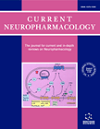-
s Purinergic Signaling and Hippocampal Long-Term Potentiation
- Source: Current Neuropharmacology, Volume 12, Issue 1, Jan 2014, p. 37 - 43
-
- 01 Jan 2014
Abstract
The purines ATP and adenosine are widely recognized for their neuromodulatory effects. They have been shown to have effects on neurons via various receptors and interactions with glial cells. In particular, long-term potentiation (LTP) in hippocampal slice preparations has been found to be modulated by ATP and adenosine. This review gives an overview of purinergic signaling in relation to hippocampal LTP and memory formation. The data supports the hypothesis that adenosine mediates a tonic suppression of synaptic transmission. Thus, low adenosine levels appear to increase basal synaptic activity via a decreased activation of the inhibitor A1 receptor, consequently making it more difficult to induce LTP because of lower contrast. During high stimulation, the inhibition of neighboring pathways by adenosine, in combination with an A2a receptor activation, appears to increase contrast of excited pathways against a nonexcited background. This would enable amplification of specific signaling while suppressing non-specific events. Although a clear role for purinergic signaling in LTP is evident, more studies are needed to scrutinize the modulatory role of ATP and adenosine and their receptors in synaptic plasticity and memory.


